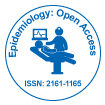Nosso grupo organiza mais de 3.000 Séries de conferências Eventos todos os anos nos EUA, Europa e outros países. Ásia com o apoio de mais 1.000 Sociedades e publica mais de 700 Acesso aberto Periódicos que contém mais de 50.000 personalidades eminentes, cientistas de renome como membros do conselho editorial.
Periódicos de acesso aberto ganhando mais leitores e citações
700 periódicos e 15 milhões de leitores Cada periódico está obtendo mais de 25.000 leitores
Indexado em
- Índice Copérnico
- Google Scholar
- Sherpa Romeu
- Genâmica JournalSeek
- SegurançaLit
- Acesso à Pesquisa Online Global em Agricultura (AGORA)
- Centro Internacional de Agricultura e Biociências (CABI)
- RefSeek
- Universidade Hamdard
- EBSCO AZ
- OCLC – WorldCat
- Texto completo do CABI
- Cabine direta
- Publons
- Fundação de Genebra para Educação e Pesquisa Médica
- Euro Pub
- ICMJE
Links Úteis
Diários de acesso aberto
Compartilhe esta página
Abstrato
Is Work Disability More Common among Same-sex than Different-sex Married People?
Charlotte Bjorkenstam, Petter Tinghög, Susan Cochran, Gunnar Andersson, Kristina Alexanderson and Richard Branstrom
Background: Research has shown that sexual minority individuals have much higher risk of somatic and psychiatric morbidity as compared to heterosexual individuals. However, less is known whether this elevated level of poor health co-occurs with higher rates of work disability. Our aim was thus to examine the association between sexual orientation and risk of work disability.
Methods: Using Sweden’s nationwide registers, we used a cross-sectional design and compared prevalence of work disability, sickness absence and/or disability pension, between same-sex and different-sex married women and men for two years, 1998 and 2008, and calculated odds ratios (OR) with 95% confidence intervals (CI) while adjusting for several confounders.
Results: Higher risk of at least one day of work disability was found among same-sex married women in both 1998 (OR: 1.5, 95% CI: 1.2-1.8) and 2008 (OR: 1.3, 95% CI: 1.2-1.5), as compared to different-sex married women. Same-sex married women also had higher risk of work disability >90 days 1998 (OR: 1.6, 95% CI: 1.2-2.1) and 2008 (OR: 1.5, 95% CI: 1.3-1.7). Also, same-sex married men had higher risks, however somewhat lower in 2008, of at least one day of work disability (OR: 1.6, 95% CI: 1.5-1.8) and >90 days in 2008 (OR: 2.0, 95% CI: 1.7-2.3), as compared to different-sex married men.
Conclusion: This study provides novel results, demonstrating that the previously identified health disparity based on sexual orientation is also reflected in elevated levels of work disability among sexual minority women and men. This finding calls for research to identify the underlying mechanisms leading to this health disparity, and tailored prevention strategies both in clinical settings and on a broader societal level to remedy this health disadvantage.
Diários por Assunto
- Agro e Aquicultura
- Alimentação e Nutrição
- Bioquímica
- Ciência da Computação
- Ciência de materiais
- Ciencias ambientais
- Ciências Clínicas
- Ciências Farmacêuticas
- Ciências gerais
- Ciências Médicas
- Ciências Sociais e Políticas
- Ciências veterinarias
- Economia e Contabilidade
- Enfermagem e cuidados de saúde
- Engenharia
- Engenheiro químico
- Física
- Genética e Biologia Molecular
- Geologia e Ciências da Terra
- Gestão de negócios
- Imunologia e Microbiologia
- Informática
- Matemática
- Química
Revistas clínicas e médicas
- Anestesiologia
- Assistência médica
- Biologia molecular
- Cardiologia
- Cirurgia
- Dermatologia
- Diabetes e Endocrinologia
- Doenças infecciosas
- Enfermagem
- Fisioterapia e Reabilitação
- Gastroenterologia
- Genética
- Hematologia
- Imunologia
- Medicamento
- Medicina Reprodutiva
- Microbiologia
- Nefrologia
- Neurologia
- Odontologia
- Oftalmologia
- Oncologia
- Ortopedia
- Pediatria
- Pesquisa Clinica
- Pneumologia
- Psiquiatria
- Toxicologia

 English
English  Spanish
Spanish  Chinese
Chinese  Russian
Russian  German
German  French
French  Japanese
Japanese  Hindi
Hindi